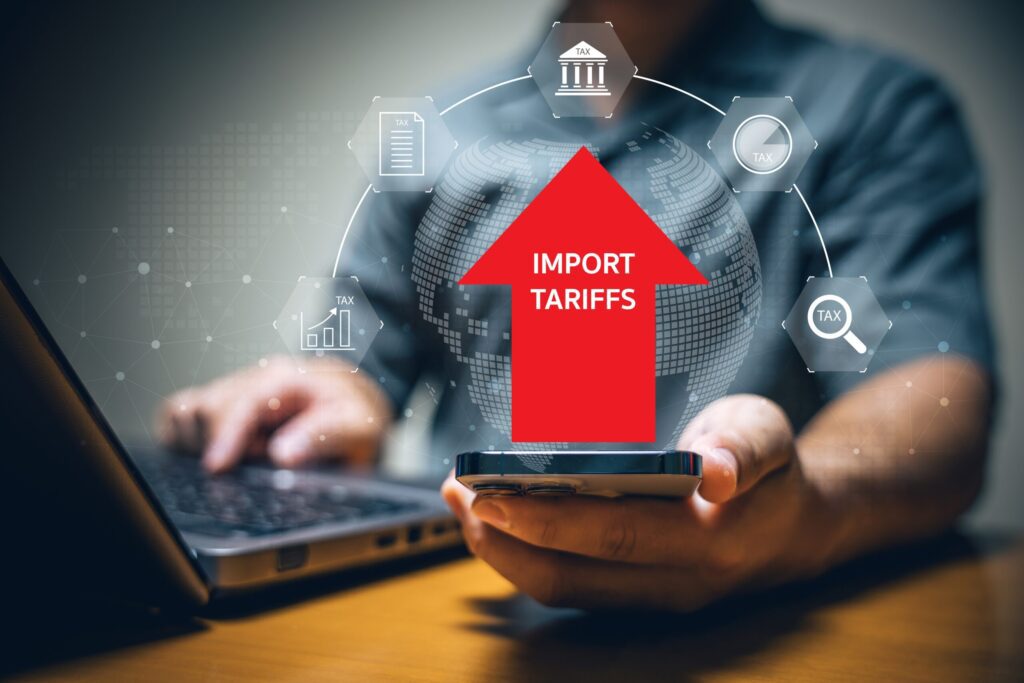The US can transform the global trade patterns through its tariff policies. With the US elections, various arrangements of fiscal and trade policies could affect the emerging market currencies and the dollar. Tariffs are significant, as they can change trade balances and currency values. For instance, if the US were to oblige or impose around 10% tariff hike across all industry verticals, it could lead to significant shifts in global trade and commerce flows and cause various EM currencies to decrease their value against the dollar. This type of massive tariff would likely lower the attractiveness of exports from emerging countries, while affecting their trade economic growth and trade balances.
Read also: Navigating Tariff Volatility: The Power Of Ftzs
In 2025, geopolitics is deeply reshaping global trade wars, leading to both prospects and risks for all sizes of businesses. The growing trade protection, fragmentation of trade blocs, and geopolitical tensions are causing disruptions and uncertainty in global supply chains. At the same time, these shifts create lucrative prospects for trades and businesses to expand their supply chains, explore new markets, and adopt regionalization. With U.S.-China tensions increasing the regional economic blocs, such as AfCFTA and RCEP, supply chains are being redefined, diversified, and restructured.
Key Factors Affecting the Global Trade in 2025
- China v/s European Union: The European Union has strengthened subsidy laws on Chinese exports, particularly in electric vehicles (EVs). China is acting with tariff increments on European luxury goods.
- U.S. China Trade and Commerce War 2.0: The U.S. continues to force penalties and sanctions on Chinese technology corporations, while China is creating its own supply chains to counteract reliance on the west.
- India’s Protectionist Policies: India is increasing import tariffs on electronics and manufacturing components to promote Make in India initiative, while affecting global brands that rely on Indian manufacturing sector.
- Penalties on Russia and Middle East: West have imposed sanctions on Russia, forcing global energy and utilities markets to diversify oil and gas suppliers. Further, the MEA remains volatile, affecting shipping routes, such as Suez Canal.
Currency Sensitivities to Tariffs
Emerging market currencies with high beta, such as the Indonesian Rupiah (IDR), Colombian Peso (COP), and Korean Won (KRW) tend to react sharply to events of declining tariffs. These exchange rates increased significantly when trade barriers were relaxed, benefiting from advanced risk sentiments and boosted global trade.
According to the recent reports, the IDR, COP, and KRW, posted the largest increases, each gaining over 1.5% against the USD during tariff relaxation periods. Other currencies, such as Chinese Yuan (CNY), Malaysian Ringgit (MYR), South African Rand (ZAR) also exhibited considerable gains, reflecting their trade-reliant nature.
Further, Central and Eastern European exchanges, such as the Polish Zloty (PLN) and Czech Koruna (CZK), showed more reasonable gains, implementing that they are less affected by trade-related events. The Hungarian Forint (HUF) was the only exchange to weaken, pointing to specific economic challenges or regional risks. This data confirms that Asian and Latin American currencies typically gain the most from lower tariffs. Meanwhile, CEE currencies tend to stay relatively stable, and certain emerging market currencies, such as the HUF, might even perform poorly in such situations.
Fundamental Exposure to U.S. Tariffs
Emerging market equities with substantial revenue generated from the U.S. face notable risks from tariffs. The MSCI EM index indicates that North Asian economies (Taiwan, South Korea) and Latin American nations (Mexico, Brazil) have the highest exposure to U.S. goods revenue, ranging from 10% to 24%.
Taiwan leads this group with 24% experience, which is susceptible to potential trade restrictions. Further, Mexico and South Korea each have a 16% exposure, which is putting these countries at higher risk. For instance, Taiwan Semiconductor Manufacturing Company, a major manufacturer of semiconductor, gains a significant portion of its revenue from the U.S., increasing its vulnerability to tariffs. Similarly, Mexico’s strong dependence on trade with the U.S. for goods makes it susceptible to tariff-induced interruptions.
Moreover, Thailand, Kuwait, and India have a more differentiated trade composition. Their larger share comes from U.S. revenue, which includes services. For instance, India has a U.S. revenue exposure of primarily 4% from services, largely due to its IT and financial sectors, with only 2% from goods.
Meanwhile, China, Hungary, Czech Republic, and Poland have very little direct exposure to U.S. revenue, benefiting from broader trade diversification. This indicates that regions such as South Korea, Mexico, and Taiwan are less dependent on the U.S. tariff fluctuations, as they are heavy manufacturing economies.
Conclusion
Mitigating the risks of US tariffs, especially for emerging market investors, demands a tactical and strategic approach. Investors should understand how currency exchanges are affected and know the revenue exposure, which allows them to not only reduce risk but also seize opportunities. It enables them to stay informed about the evolving global trade landscape.

